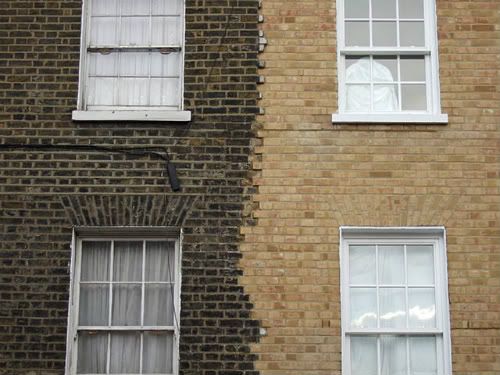Probably the most disturbing thing I noticed on my travels was that most U.S. cities are still largely segregated by color. You have black areas and white areas and latino areas and Asian areas and others. The most obvious divides are between blacks, whites, and latinos.
Why, I wondered, is America still like this? It goes against all the rhetoric that we tell ourselves that we are a "melting pot" or a "salad bowl" or whatever. The truth is, we are not. We are more like a frozen dinner, with each item separate.
When I returned home from my trip, my eyes were opened to the segregation that exists in my hometown of Fullerton, CA. It is a city separated by the railroad tracks. It is largely a white/latino divide.
I wanted answers. So I began to research the issue and learned that the segregation in Fullerton was largely the legacy of racist housing policies. For many years, the Mexican citrus workers in Fullerton were kept separate from the dominant/white community. They were housed in work camps called "citrus towns" that eventually evolved into the modern-day barrios. Up until at least the 1960s, if you were a minority in Fulletron, you could only purchase property in very specifically designated areas.
But, you might say, that was then…this is now. We have laws against housing discrimination. Technically, that is true. But the sad reality is that, for many developers and property owners, minorities in large numbers drive down property values. The new tool of discrimination is high housing costs. This works pretty well to keep the ethnicities separate. Of course, there are exceptions. In middle class neighborhoods, there is some diversity. But in the lower income neighborhoods (Truslow-Valencia), it is pretty much all latinos.
How can we change this? I have no idea. But I am seriously considering renting an apartment on Truslow, a low-income, high-latino neighborhood on "the other side of the tracks." One hesitation I have is that I am aware of a phenomenon called "gentrification." This is when higher-income people move into lower-income neighborhoods and drive up property values and drive out the minorities. Usually, this happens when cities or developers choose to "redevelop" areas, which often has the effect of driving out the lower income population.
But I have no intention of raising property values or driving out minorities. I sincerely want to live in a neighborhood where I am the minority, to perhaps get to know, in a real way, those who have been historically marginalized. That is my only intention. I want to try. There is only the trying. I am not a developer or property owner or redevelopment agency. I'm one dude, a middle class college teacher.
To find the answers, I turned to Gustavo Arellano's column "Ask a Mexican" in the OC Weekly. In response to the question of gentrification of Mexican neighborhoods, Gustavo had this to say:
I think what you're complaining about is the gentrification of historically Mexican neighborhoods by hipsters, a phenomenon happening everywhere from Denver to Los Angeles, SanTana to Chicago and beyond. It's important to fight the encroachment of pendejos with no ties to the area who start demanding changes—get rid of quinceañera shops, crowing roosters, cars parked on lawns, or corn grown in the back yard and nopales in the front. At the mismo time, though, raza really angry with gentrification should practice gente-fication, the process of young locals getting over their pocho complex and opening their own businesses to pump enough money back into the area so city bureaucrats don't have any excuse to use the ruse of redevelopment on raza. Think of that strategy as our economic Mexican-American War—and if there are hipsters who are respectful of the old guard, such as the San Patricios that joined our side against the invading Yankees so long ago, then I say embrace their ranks, pound a PBR with them and teach them the secrets of scaring insufferable hipsters away from the barrio by blasting Banda El Recodo at all hours of the noche.
Gracias, Gustavo.

